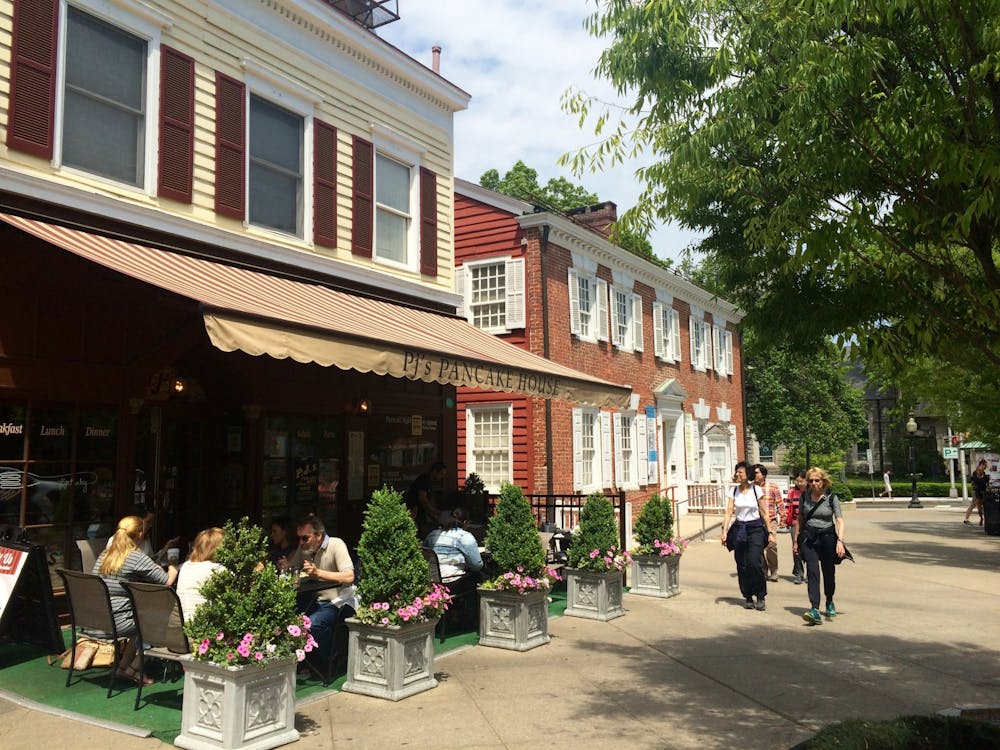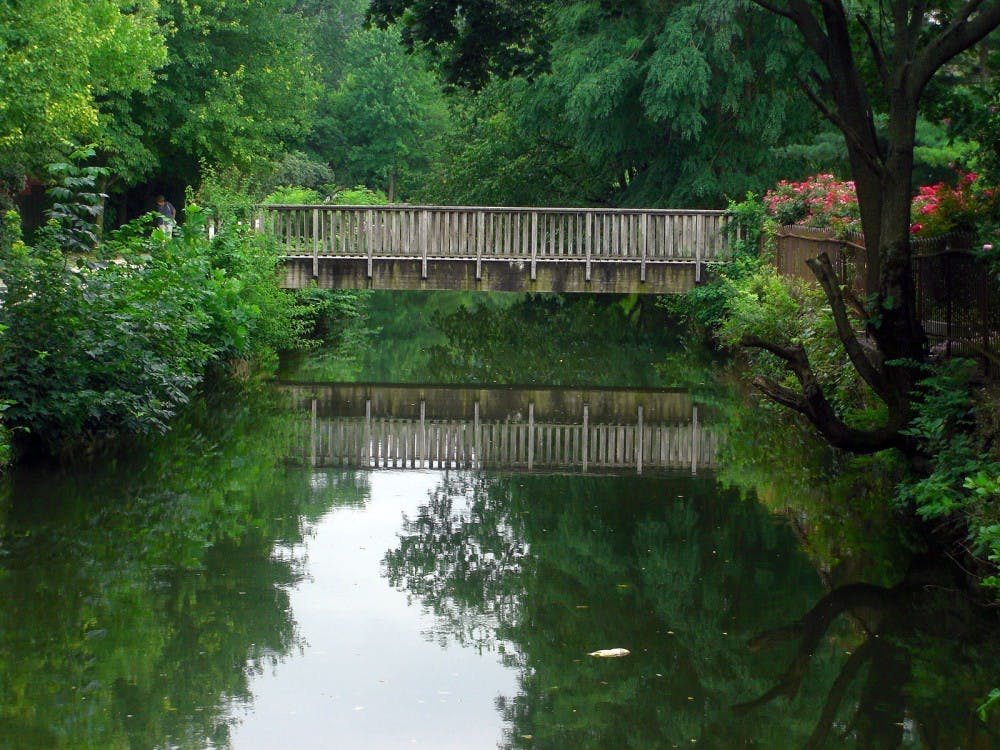Johnson was originally going to be a geosciences major, but after a trip to Yellowstone National Park for an astrobiology course, she found that "it was more exciting to [explore the landscape] in my own creative way than record it through numbers." This is not to say that in choosing to major in art and archaeology, Johnson gave up geosciences. It is the availability of geosciences classes and visual art classes and the ability to pursue both studies that makes Princeton a rewarding place to take art. "Being at Princeton and being able to take a geosciences class along with my painting class makes [my] body of work more interesting," Johnson said.
Her story highlights two key points about the Program in Visual Arts at Princeton: It is neither a specialized art school nor is it just a mix of finger painting and late-night ceramics classes. The rigorous curriculum requires long hours in the studio and a thesis show and, perhaps most importantly, also requires that students take classes in subjects outside the visual arts.
Students may either get a certificate in visual arts or choose Program II in the Department of Art and Archaeology, which combines art history and visual arts. The former option is more popular, while Program II only has three seniors this year. The study of art at Princeton, then, is not about specialization, but integration. The program strives to bring the arts to the all of the campus community by nurturing what President Tilghman calls an "arts neighborhood" in her Report on the Arts at Princeton. As Marjorie Carhart, program coordinator and technical manager of the Lewis Center, puts it, "students come to Princeton with many different pursuits, and the arts department is able to make art available to students with other interests."
In fact, there are many students earning certificates in visual arts who are science and engineering majors. Roxanne Martinez '08, a chemistry major, combined science and art in her photography show about surgery. Dorie Golkin '08, a senior majoring in civil engineering with a certificate in photography, focuses on these two subjects because they are so different. "They're complete opposites, but that is why I love it," she said.
The visual arts program, currently housed in 185 Nassau St., is physically distanced from the main part of campus, but Peter Lewis '55's 2006 donation of $101 million to the arts will go toward integrating the arts more fully into Princeton's campus, in addition to giving arts students more resources and opportunities. First and foremost, the donation will fund a new center for the creative and performing arts in the southern part of campus that will help bring arts students together in a more central location. The donation will also enable the creation of a new society of fellows, the establishment of a new research program and the provision of more physical space. The Lewis grant has already funded new visual arts classes, making possible two new film seminars and underwriting the supply costs of art classes, which can quickly become expensive.
The faculty in the Program in Visual Arts are all renowned working artists, which can be a mixed blessing for students. Nora Gross '08, a certificate candidate in the program, explained that "the faculty have been incredibly helpful in finding my artistic voice, whether or not they agree with it." As artists themselves, the faculty have very strong opinions about art that may sometimes be hard to swallow, but this enthusiasm ultimately inspires students to be more involved in the arts program and, sometimes, to even continue on to find their own place in the art world.
At Princeton, continuing on to get a Master of Fine Arts (MFA) degree or even claiming that one is going to be an artist can be an intimidating decision in the midst of so many students who are hired in well-paid fields before the second semester of their senior year. Johnson, who plans to pursue an MFA, said that "getting your MFA can be terrifying because you can get caught up in the feeling that you should get a real day job at Princeton." She added, however, that the faculty's connection with the art world helps students get jobs and get noticed after college.
In other words, there are not many starving artists graduating from Princeton. In fact, there are many famous alumni who have graduated from the program, including Rhodes Scholar Willow Sainsbury '04, noted photographer Fazal Sheik '87 and prominent painter Mark Sheinkman '85, to name only a few. Pursuing a career as an artist may not be the most common post-Princeton path, but it is by no means a rarity within the Princeton community.
Though it may at first seem to be a daunting course of study, the Program in Visual Arts is a perfect example of how students can pursue any academic interest at Princeton and still get a liberal arts education. Students say that Princeton's program in painting or photography is just as academically rigorous and rewarding as a major in a more mainstream department like economics or chemistry. The bottom line is that the program allows students to get a strong education while studying what they love. As Glenn Brown '09 puts it, "Princeton's Program II allowed me to pursue my creative ambition without feeling obligated to do a major your father might want you to do."








